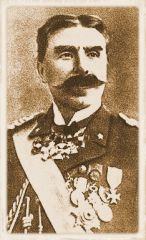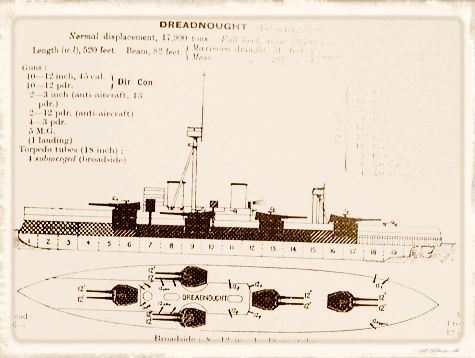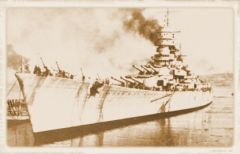Cuniberti: the creator of the monocaliber battleship
Cuniberti: the creator of the monocaliber battleship
by Nicola Zotti
Translation from Italian by Dario de Judicibus
Original article from Warfare.it — courtesy of the author.

Can an article, although written on a military magazine, be one of the decisive cause of the First World War? Even more so if written by an Italian in England more than 10 years before the outbreak of the conflict?
However strange it may seem, the ideas of the General of Naval Engineering Vittorio Cuniberti created either the indispensable strategic premise and the main cause of the First World War.
Born in 1854 in Turin, Cuniberti was a real champion in his field. He graduated in engineering at twenty, he entered the Naval Engineers where he remained until his death in Rome in 1913, soon distinguishing for his extensive and in-depth professional culture and the originality of the projects that the Italian Navy, for limited financial resources, could not always achieve, but in a fit of generosity, however, allowed him to disclose.
At the beginning of the twentieth century, a series of articles were published on various international specialist magazines, in which Cuniberti proposed such a conceptually revolutionary warship that from that moment on the most modern ships of Navies in the world would have become obsolete: the monocaliber battleship.
The monocaliber battleship concentrated in itself the best technology available at the time: for example, it was driven by steam turbines fueled by naphtha and had an armor of about 30cm which did not penalize speed and autonomy: the former could get to 23 nodes and the latter could reach 15,000 miles.

Even more important it was the idea of single caliber armament. Cuniberti destroyed the well-established habit of multiplying the sizes of the guns, demonstrating with his arguments that, on the contrary, it was better to reduce them to the minimum number, that is, the maximum possible number of guns of the same caliber and just enough of those to be used against the smaller tonnage ships.
An article, in particular, served to spread the ideas of Cuniberti: in the edition of 1903 the Jane’s All The World’s Fighting Ships published «An Ideal Battleship for the British Fleet», by which, in just three pages, Cuniberti expressed so effectively his ideas to convince all the Navies of the world to adopt that kind of battleship.
Secretly, many military Navies were studying a warship similar to that of Cuniberti, but his words served to coagulate the proposals, to convince the perplexed and accelerate the transition to the actual construction.
The British Admiral John Fisher was the fastest to get a sense of the Cuniberti’s projects. Perhaps he had already devised a similar ship, so that he claimed for himself the primacy of the idea and never gave any credit to the Italian. Just a year after becoming the supreme leader of the British fleet, in 1906, Fisher launched the Dreadnought.
This ship substantially changed the balance of power between Britain and the continental powers, especially Germany. The British had a substantial advantage over the Germans, but the introduction of the Dreadnought decreased it rather than increasing: what mattered now was the number of ships of this new class in service, and not all of those that preceded it. Therefore, for Germany, the race started again from a less unfavorable situation than in the past because its industry was able to produce Dreadnought almost at the same speed as the English one: they reacted in 1906 with the Nassau class and in 1909 with the Helgoland class, which, although a bit weaker than the English counterparts, reduced the gap in naval forces from 1:8 to 10:12.

An arms race began, comparable only to that of the atomic bomb, that had really heavy consequences on all national economies, eating up resources at an astonishing rate.
The political effects not long in coming. France was lagging behind in naval programs, preferring to complete unnecessary ships of the pre-Dreadnought class that they already had began: so the conditions for establishing more friendly relations in anti-German perspective between Britain and France occurred. Germany, on the other hand, comprised of not being hopelessly inferior to British naval power, and gained the confidence to defend its coasts, became more aggressive and available to the conflict. The inexorable mechanism that would lead to World War I had began.
However Cuniberti was only an outstanding engineer and not a strategist: his invention had precipitated the conflict, but it did not predict the war modalities.
After a few years, in fact, the Dreadnought was already superseded by the more powerful, armored, and fast super-Dreadnought, but the military logic required that, during the war, either the former and the latter ships remain virtually unused in ports due to the operating conditions that made impossible to use these giantess against each other: the advancement in technology in submarines and torpedoes had made them too vulnerable.
The war proved once again to have a rationality that often who is responsible for political-military choices does not understand, and that does not depend on the technologies themselves, but the way they are used.




















Please use Facebook only for brief comments.
For longer comments you should use the text area at the bottom of the page.
Facebook Comments